BY DEFENCE JOURNALIST SAHIL | T.I.N. NETWORK
183 Million Email Passwords Leaked: Global Security Alarms Ring as Gmail Users Rush to Check Their Accounts
New Delhi | October 2025
A quiet but staggering digital shockwave has rippled across the world. More than 183 million email addresses and passwords have been leaked online in what cybersecurity experts are calling one of the biggest infostealer malware-driven breaches seen this year. A disturbingly large portion of this exposed data belongs to users of Google’s Gmail service, igniting concerns of widespread account compromise and potential identity theft in the coming weeks.
The exposed records surfaced through Have I Been Pwned (HIBP), a globally trusted service operated by cybersecurity specialist Troy Hunt, which tracks and verifies data breach incidents. The newly uploaded dataset, titled “Synthient Stealer Log Threat Data,” highlights a chilling trend: today’s cybercriminals no longer always break through fortified corporate servers. They now slip silently into personal devices, stealing login credentials from the shadows where users least expect it.
The breach underscores a harsh reality of the modern digital age. It is not enough for companies to secure servers. The threat now lurks inside everyday devices— laptops, mobile phones, tablets—turning personal gadgets into ticking time bombs of data theft.
Not a Google Breach, Yet a Google-User Crisis
Google has confirmed that its systems remain uncompromised. No breach took place inside any Gmail server infrastructure. Yet the danger is no less severe.
The leaked credentials were siphoned directly from infected computers, not from cloud accounts. Malicious software, quietly operating through browser extensions, pirated apps, risky downloads, or disguised email attachments, collected everything users typed or saved: passwords, session cookies, authentication tokens, even auto-filled banking and shopping credentials.
This technique bypasses traditional perimeter defenses. Password managers, secure logins, and browser warnings struggle against malware that already lives inside the device.
In several cases, the stolen passwords were found in plain text. No encryption. No scrambling. No safety net.
A Growing Marketplace of Stolen Identities
Experts warn that cybercrime has turned user data into a thriving underground economy. Packages of stolen credentials are traded openly on dark web forums, fueling:
• bank account takeovers
• SIM swapping and financial fraud
• workplace system infiltration
• mass phishing operations
• espionage and targeted surveillance
The global dependency on reused passwords worsens the fallout. One leaked email-password pair often unlocks half a dozen other services used by the same person—sometimes more.
Major publications, including Forbes, Cyber Insider, and Heise Online, report that this is not a one-off breach but part of a rapidly expanding malware-driven data theft ecosystem that law enforcement struggles to contain.
Why Gmail Is a High-Priority Target
Gmail is a passport to digital identity. A successful breach does not merely unlock a mailbox; it grants direct access to:
• recovery links of other services
• cloud-stored documents
• financial receipts, invoices, and personal certifications
• photos and private communications
• account permissions integrated with Google Workspace
Perhaps most alarming, infostealer malware has the capacity to harvest session cookies. With these, a hacker can sneak into an account without ever entering a password. Two-factor authentication (2FA), in such cases, fails to act as a barrier.
“This shift in cybercrime strategy means attackers no longer need to storm the castle walls. They simply steal your keys while you sleep,” reads a cybersecurity note attributed to an analyst reviewing the Synthient dataset’s implications.
How to Check If Your Email is Exposed
Users are urged to immediately verify their Gmail or any email address through Have I Been Pwned — a globally recognized platform for verifying compromised accounts. Enter the email address, and the system reveals whether it appears in the leaked database.
If listed, the warning is serious and immediate action becomes essential.
Priority Steps to Protect Your Accounts
Cyber experts recommend that affected users not only change their passwords but adopt strong, future-proof measures. Google’s Security Checkup tool helps detect suspicious sign-ins and identifies unauthorized devices or apps with access to sensitive data.
Security professionals advise shifting away from SMS-based 2FA due to its vulnerability to SIM-swapping attacks. Passkeys or hardware security keys drastically strengthen authentication and are increasingly recommended by major cybersecurity institutions worldwide.
Browsers should be cleaned of unknown extensions. Any software not directly sourced from official app stores must be uninstalled. Frequent malware scans should become routine. Above all, passwords must be unique, complex, and stored through reputable managers rather than browsers.
The Bigger Picture: A Future of Invisible Threats
Malware-driven breaches represent a crucial turning point in global cybersecurity. Hackers no longer need to breach fortified defense systems of corporations; they infiltrate weakly protected personal devices that sit at the perimeter of every enterprise and government network.
The stakes have never been higher. A journalist’s email could expose confidential sources. A soldier’s Google account might reveal base locations. A business leader’s Gmail could unlock corporate secrets worth millions.
The fallout of this breach will continue to evolve in the coming months as cybercriminals exploit stolen data in waves. For now, users must strengthen their digital defenses before their identities fall prey to criminal exploitation.
The breach may not have originated in a corporation’s network. It was born in living rooms and home offices. This attack reached the heart of everyday life, where passwords are often reused, security warnings ignored, and convenience trumps caution.
A digital wake-up call has arrived. The question is whether users will heed it in time.
BY DEFENCE JOURNALIST SAHIL | T.I.N. NETWORK
183 मिलियन ईमेल पासवर्ड लीक: जीमेल यूजर्स के लिए बड़ा खतरा, जानिए कैसे करें चेक कि आपका अकाउंट हैक हुआ या नहीं
नई दिल्ली | अक्टूबर 2025
दुनिया के डिजिटल स्पेस में बड़ी हलचल मच गई है। साइबर अपराधियों द्वारा चोरी किया गया एक विशाल डाटा सेट सामने आया है, जिसमें 183 मिलियन से अधिक ईमेल एड्रेस और उनके पासवर्ड शामिल हैं। चौंकाने वाली बात यह है कि इनमें से सबसे बड़ी संख्या जीमेल यूजर्स की है। साइबर सुरक्षा विशेषज्ञ इसे हाल के महीनों की सबसे बड़ी ईमेल-पासवर्ड डंप घटना बता रहे हैं, जिसने वैश्विक स्तर पर सुरक्षा अलर्ट को उभार दिया है।
यह डाटा प्रसिद्ध साइबर सुरक्षा प्लेटफॉर्म Have I Been Pwned (HIBP) पर जोड़ा गया है, जो दुनिया में कहीं भी हुए डाटा ब्रीच की जानकारी यूजर्स को मुहैया कराता है। इस बार जो डेटासेट सामने आया है, उसका नाम “Synthient Stealer Log Threat Data” रखा गया है।
यह डाटा किसी कंपनी के सर्वर पर साइबर अटैक कर नहीं निकाला गया। यह चोरी हुआ है उन डिवाइसेज़ से, जो इंफो-स्टीलर मालवेयर से संक्रमित थे। मालवेयर चुपचाप आपके लैपटॉप, मोबाइल या कंप्यूटर में सक्रिय रहता है और आपके ब्राउज़र में सेव सभी पासवर्ड, लॉगिन जानकारी, यहां तक कि ऑटोफिल बैंकिंग डिटेल्स भी चुरा लेता है।
गूगल के सर्वर से नहीं, यूजर्स के डिवाइसेज़ से चोरी हुई जानकारी
Google ने स्पष्ट किया है कि उनके सर्वर किसी भी प्रकार की साइबर हैकिंग से सुरक्षित हैं। इसलिए यूजर्स को यह गलतफहमी नहीं होनी चाहिए कि Gmail इन्फ्रास्ट्रक्चर चोरी हुआ है।
मुद्दा यह है कि अपराधी सीधे यूजर पर हमला कर रहे हैं, न कि कंपनी की सुरक्षा पर।
मालवेयर आपके सिस्टम में बैठकर आपकी हर लॉगिन गतिविधि को नोट करता है:
• सेव्ड पासवर्ड
• सेशन कुकीज
• टू-फैक्टर ऑथेंटिकेशन टोकन
• ऑटोफिल क्रेडेंशियल
सबसे भयावह बात यह सामने आई कि बड़ी संख्या में पासवर्ड प्लेन टेक्स्ट में मिले। यानी बिना किसी एन्क्रिप्शन के।
डार्क वेब पर बिक रही आपकी डिजिटल पहचान
साइबर अपराध की दुनिया में ऐसे चुराए गए डाटा का कालाबाजार तेजी से पनप रहा है। इस डाटा का इस्तेमाल इन खतरनाक गतिविधियों में हो सकता है:
• बैंक अकाउंट हैकिंग
• वॉलेट और UPI धोखाधड़ी
• सोशल मीडिया अकाउंट चुराने
• उच्च स्तरीय फ़िशिंग कैंपेन
• जासूसी और सर्विलांस
पासवर्ड री-यूज की आदत खतरे को कई गुना बढ़ा देती है। एक ईमेल-पासवर्ड कॉम्बिनेशन अगर लीक होता है, तो उसी यूजर के:
बैंकिंग ऐप
ऑनलाइन शॉपिंग
वर्कप्लेस लॉगिन
क्लाउड डेटा
सबकुछ खतरे में पड़ सकता है।
जीमेल सबसे बड़ा निशाना क्यों?
Gmail आज डिजिटल पहचान की चाबी है।
अगर जीमेल हैक हुआ, तो:
• सभी रिकवरी ईमेल्स
• गूगल ड्राइव डॉक्यूमेंट्स
• गूगल फोटोज में निजी तस्वीरें
• OTP ईमेल्स
• GPay, YouTube, Workspace डेटा
सब कुछ क्रिमिनल्स के हाथ में जा सकता है।
मालवेयर जब सेशन कुकी चुरा लेता है, तो हैकर बिना पासवर्ड डाले भी Gmail में लॉगिन कर सकता है। ऐसे में टू-स्टेप वेरीफिकेशन भी बेअसर साबित हो सकती है।
एक साइबर विशेषज्ञ ने कहा:
“अब हैकर्स किसी किले की दीवार नहीं तोड़ते, वे आपकी जेब से चाबी चुराकर अंदर प्रवेश कर जाते हैं।”
कैसे पता करें कि आपका ईमेल इस ब्रीच में शामिल है?
इस स्थिति में घबराने की बजाय तुरंत जांच करना बेहतर है।
यूजर्स Have I Been Pwned वेबसाइट पर जाकर अपना ईमेल एड्रेस डाल सकते हैं।
साइट बताएगी कि आपका ईमेल इस नए डाटा ब्रीच में या किसी पुराने ब्रीच में शामिल है या नहीं।
अगर आपका ईमेल लीक दिखे, तो तत्काल कदम उठाना जरूरी है।
अगर आपके जीमेल अकाउंट को खतरा है तो ये कदम तुरंत उठाएं
Google का Security Checkup टूल उपयोग कर:
• संदिग्ध डिवाइसेज को लॉगआउट करें
• अनजान थर्ड-पार्टी ऐप्स की एक्सेस हटाएं
• पासवर्ड मजबूत व यूनिक रखें
विशेषज्ञ SMS-आधारित OTP से आगे बढ़कर
पासकी या हार्डवेयर सिक्योरिटी कीज़ का उपयोग करने की सलाह देते हैं जो अधिक सुरक्षित सुरक्षा प्रदान करते हैं।
किसी भी तरह का फर्जी ऐप, क्रैक सॉफ्टवेयर या अज्ञात ब्राउज़र एक्सटेंशन तुरंत हटाएं।
मोबाइल और सिस्टम में मालवेयर स्कैन जरूर चलाएं।
बदलता साइबर वॉरफेयर: घर-घर में छिपा खतरा
यह ब्रीच इंटरनेट सुरक्षा के बदलते स्वरूप की चेतावनी है।
आज खतरा कॉर्पोरेट सर्वर्स में नहीं,
आपके घरों, फोन और लैपटॉप में छिपा है।
जहां यूजर्स:
• कमजोर पासवर्ड रखते हैं
• संदिग्ध विज्ञापनों पर क्लिक कर देते हैं
• मुफ्त ऐप्स में सुरक्षा भूल जाते हैं
• बार-बार वही पासवर्ड उपयोग करते हैं
यही अनदेखी अब सबसे बड़ा हथियार बन चुकी है साइबर अपराधी गिरोहों के लिए।
आने वाले दिनों में इस चोरी हुए डाटा का दुरुपयोग
बैंकिंग धोखाधड़ी, फर्जी डिजिटल पहचान,
और साइबर जासूसी के रूप में देखने को मिल सकता है।
यह केवल एक ब्रीच नहीं।
यह डिजिटल खतरे की घंटी है।
अंत में चेतावनी और सीख
यह घटना याद दिलाती है कि
डिजिटल दुनिया में सुरक्षा सिर्फ कंपनियों की जिम्मेदारी नहीं है।
उपभोक्ता को भी जागरूक होना पड़ेगा।
हर पासवर्ड की कीमत है।
हर क्लिक का हिसाब है।
हर ईमेल की पहचान है।
183 मिलियन लोगों के डिजिटल द्वार अब कहीं न कहीं खुल चुके हैं।
प्रश्न यह नहीं कि अगला कौन होगा,
प्रश्न यह है कि आपने तैयारी की है या नहीं।














Add Comment